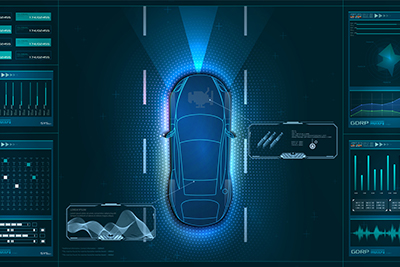
Many people are intimidated by autonomous vehicles. How are we to trust a robot on the roads when driving kills thousands of people per year? And how are we to believe that these vehicles are less fallible than humans? Well, it’s true: autonomous cars are safer than humans. But every process can be enhanced still.
One emerging innovation in autonomous driving is the advancement of sensors in LiDAR (light detection and ranging) systems. LiDAR systems are the eyes of autonomous vehicles, using sensors to gain a 360-degree view of the road.
The Challenge of LiDAR Systems
Unfortunately, LiDAR systems face challenges. Besides their expense, LiDAR systems aren’t technologically perfect. LiDAR sensors work at a reduced capacity in snowstorms, fog, and nighttime conditions. While the sensors may not be any worse than human drivers in lackluster driving conditions, the expectation of LiDAR systems is to be more accurate and more precise than humans. So how do we make sensors excel in every context?
The Advancement of Sensors in LiDAR Systems
Scientists and engineers have been working hard to strengthen the ability and reduce the vulnerability of vehicle sensors. One of the most significant breakthroughs in LiDAR systems is the emergence of frequency-modulated continuous-wave (FMCW) systems.
FMCW systems use sensors to extract time and velocity information from the frequency shift of returning light. The systems send out continuous pulses of light to gather a more precise picture of the surrounding environment.
The most significant benefit of FMCW systems is the ability to gather data faster. FMCW systems are self-supporting: they don’t need central AI systems to analyze the data that scanners collect. Thus, FMCW systems help vehicles work more effectively, quicker, and safer.
Continuous-wave systems prove invaluable in conditions like fog, snow, and rain. Hence, FMCW systems can reduce the rate of fatalities in the conditions that take the most lives.
